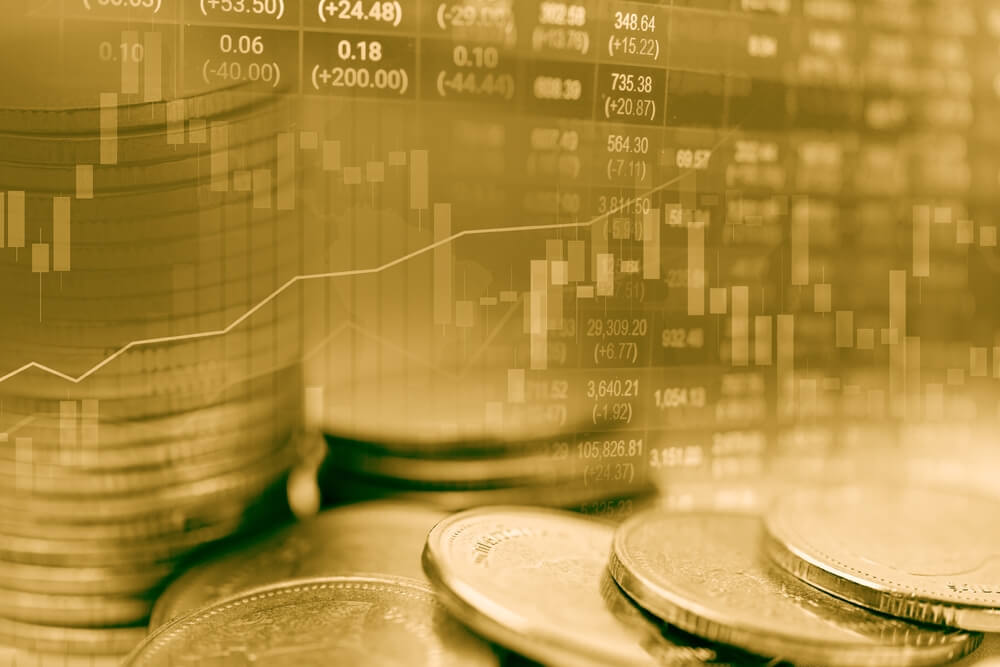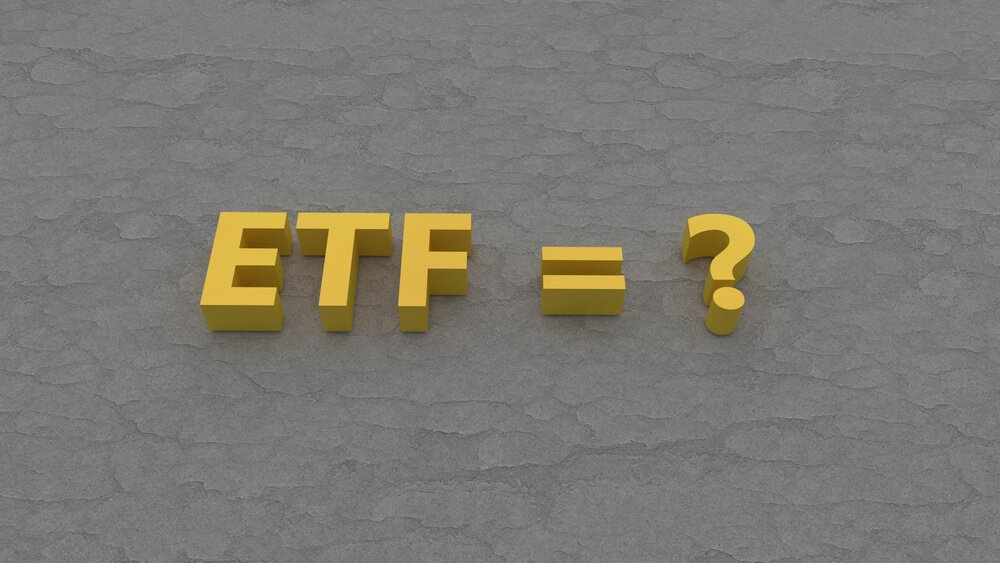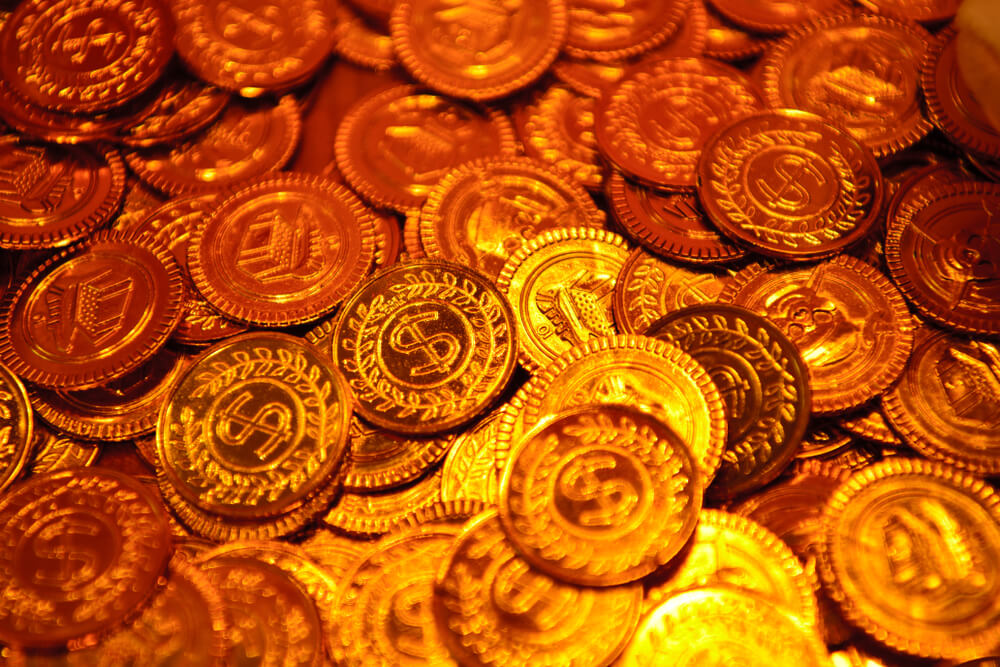
Getting Started with Gold ETFs
Gold is an excellent asset for investors who want stability and security for their investments. For others, however, who fancy growth and have a greater appetite for risk, gold investing is usually on the backburner of their plans or not a consideration at all.
Gold is a safer bet in many ways, attracting many investors but putting off seasoned investors. Because it locks in funds and provides no dividends like stocks or interests like mutual funds, it acts more like rainy-day savings that come to the rescue during a bleak economic climate. And, as alluded to above, gold doesn’t appreciate as much as individual stocks do long-term.

Kindly note all of the above information applies majorly to physical gold investments. A gold investment could be in the digital form, too, or an arrangement that doesn’t entail physical possession of the metal at all. One of those investments is a gold ETF.
So, what is a gold ETF? How do you get started with gold ETFs? What are the best gold ETFs to stash your cash in?
In this article, we’ll go through:
- What gold ETFs are and how they work
- How to invest in gold ETFs
- The best gold ETFs to buy and more
Gold exchange-traded funds fit in well for gold investors who don’t want to deal with physical holdings but would still like their investment portfolio to have some kind of gold exposure. Keep reading to learn more.
Table of Contents
What is a Gold ETF?
An ETF (exchange-traded fund) is a form of shared investment security that tracks a specific commodity, sector, index, or some other asset. It works like mutual funds but differentiates itself by being available on the stock market. That means ETFs can be bought and sold during trading hours on a given day, unlike a mutual fund that you can trade only once after market closure.
ETFs can track any valuable commodity—one of them being gold. Gold ETFs work just like a regular ETF, but their underlying asset is gold. Unlike ETFs that focus on stocks, gold ETFs diversify your investments or provide a portfolio hedge, which comes in handy during economic downturns.
You may accord your portfolio an eclectic twist by investing directly in physical gold or maybe the shares of mining companies. But that route could be expensive and certainly not as guided as investing in gold through an ETF.
Read more: How Gold ETF Works
How Do Gold ETFs Work?

A gold ETF company will create the ETF based on a specific methodology and sell the fund’s shares to interested investors. The service provider will buy and sell gold or gold-related assets/securities as part of the assets managed under the ETF.
If the fund is invested in gold bullion, the investors will not end up owning the precious metal, irrespective of the number of ETF units they own. That’s a small price investors pay for gaining gold exposure without dealing with the issues of storing gold.
Gold ETF unitholders, however, benefit from dividend payments, reinvestments, etc., just like the benefits attached to a gold stock or mutual fund.
Expense Ratio
Gold ETFs have costs, referred to as “expense ratio”. The expenditure is usually a minor portion of the total investment used for covering the fund’s yearly operating expenses. A lower expense ratio is preferable because it costs investors less money and is also an indicator of the fund’s size.
Expense ratios can vary based on the ETF. An expense ratio of less than 1% is considered ideal. If you’ve invested $5,000 and the fund’s ER is 0.75%, it means you pay $37.5 as annual expenses—which is pretty cheap considering the investment size.
That said, 0.75% is still relatively high. Most well-performing gold ETFs have expense ratios under 0.5. The percentage figure for iShares Gold Trust ETF, for instance, is 0.25. We’ll discuss a few of them in some detail later in the article.
Investing in Gold ETFs
Thanks to the healthy influx of platforms and services offering gold ETF investment opportunities, investing in gold ETFs is much easier than a decade or even a few years ago.
Gold ETFs are usually bought through brokerages. Here are the steps:
- Open a trading account with your broker of choice. You would be asked for some documents for verifying your identity. If you already have a trading account, you may skip this part.
- Log in to your trading account and load the required funds.
- Pick the gold ETF of your choice and ascertain the total number of shares or units you’d like to buy. Once done, process the order. The gold ETF units shall be credited to your trading account the same day.
When choosing a broker, ensure the service provider is known for their research support and ease of transactions. Brokers facilitate manual trading or enlist a robo-advisor to manage the task. Robo-advisors invest on behalf of clients using their data gathered beforehand and running them through their algorithms. The methodology is not fully automated but ensures minimal manual intervention.
The Best Gold ETFs to Invest In
Gold ETFs worth recommending are those that have:
- Assets under management worth $200 million or more so that the valuation is not easily manipulatable by market trends
- Expense ratios of less than a percent (usually much lower than that)
- Lower risks or are non-leveraged (do not rely on futures and options contracts or other derivatives)
The following gold ETFs meet the above requirements by a long shot:
SPDR Gold Shares
With over $58.1 billion total assets under management, SPDR Gold Shares is the largest gold ETF and the most liquid gold-backed ETF. The fund mainly caters to the investing needs or investment strategies of institutions or individuals with large pockets.
The ETF tracks gold bullion prices in the OTC (over the counter) market. The trust sponsoring the fund holds gold bullion besides some cash. As mentioned earlier, the ETF’s shares are incredibly liquid. They trade at the spot price or current market price of gold during the trading day.
The ETF’s ER of 0.40% isn’t the lowest but way below the prescribed 1 percent upper barrier—particularly when you factor in the costs attached to shipping, insuring, and warehousing gold bars and coins.
iShares Gold Trust
iShares Gold Trust has managed assets worth $28.9 billion, more than half of SPDR’s holdings since 2005. However, its expense ratio is low at 0.25%, which helps it command a significant market share in the sea of gold ETFs and other gold-backed funds.
A single share of the ETF represents 1/100th of a gold ounce. Like SPDR, iShares Gold Trust is also invested in physical gold stored in JPMorgan Chase’s London branch vaults. iShares offers another gold ETF, called iShares Gold Strategy ETF. Set up in June 2018, it has assets under management worth $4.6 million. The number isn’t significant, which is why it’s not on the list. But it’s a fund to watch out for.
VanEck Merk Gold Trust
Unlike the above two, VanEck Merk Gold Trust focuses on the stocks of major gold mining firms. If you want to invest in gold stocks via an exchange-traded fund, ETF VanEck is perhaps your best bet.
The value of gold mining stocks is not purely reliant on gold price or the gold market. The company’s performance concerning its gold production and profits generated also influences the stock’s price and, therefore, the fund’s value.
There’s a greater return potential. But because the fund deals with stocks and the stock market is subject to its vagaries, the risk quotient is more significant, meaning considerable potential setbacks when the stock market’s down.
Currently, VanEck Gold Miners ETF holds stocks of at least 50 gold mining firms, with its top holdings being Newmont, Franco-Nevada, Barrick Gold, Newcrest Mining, and Wheaton Precious Metals, to name a few. Here is the complete list of companies.
SPDR Gold MiniShares ETF
As the name indicates, SPDR Gold MiniShares Trust is set up by the folks who devised SPDR Gold Shares ETF. The MiniShares ETF serves as an option for budget-conscious investors, who otherwise flock to iShares Gold Trust. The ETF owns gold bullion and, therefore, offers direct exposure to gold prices just like its bigger sibling.
The SPDR Gold MiniShares ETF is ideal for retail investors seeking cost-effective gold investment opportunities. However, the small size translates to less liquidity, which may come back to hurt you during market volatilities. But because the fund’s cost is low, your long-term returns will not be impacted much.
VanEck Junior Gold Miners ETF
Unlike its bigger sibling, VanEck Junior Gold Miners ETF deals with smaller mining firms. Called junior gold miners, some of the junior firms are still exploring or looking for lands to mine for gold. Outputs are expected to be greater than usual once the ideal sites are located, resulting in higher returns for investors. Pan American Silver, Evolution Mining, Yamana Gold, First Majestic Silver, etc., are some of the junior gold miners the ETF is focused on. For the complete list, click here.
Read more: Investing in Gold Mutual Funds
Conclusion
Gold isn’t the asset that usually comes to mind when you sit down with your financial advisor(s) to devise a growth-focused investment portfolio. That, however, doesn’t mean you shun it entirely. If your advisor tells you not to put any money in gold, that’s not sane investment advice, to be honest.
Gold must always be a part of your investment strategy, constituting anywhere between 5 to 10% of your total investments and padding your other assets. And the gold could be in the form of physical gold, gold IRA, gold stocks, gold ETFs, etc.
If you’re not keen on investing in the physical metal and also do not have the risk appetite needed to deal directly with the gold mining industry through stocks, a gold ETF is an ideal middle ground.
If you’d like to invest in physical gold that’s securely stored and professionally managed, look to a gold IRA.


